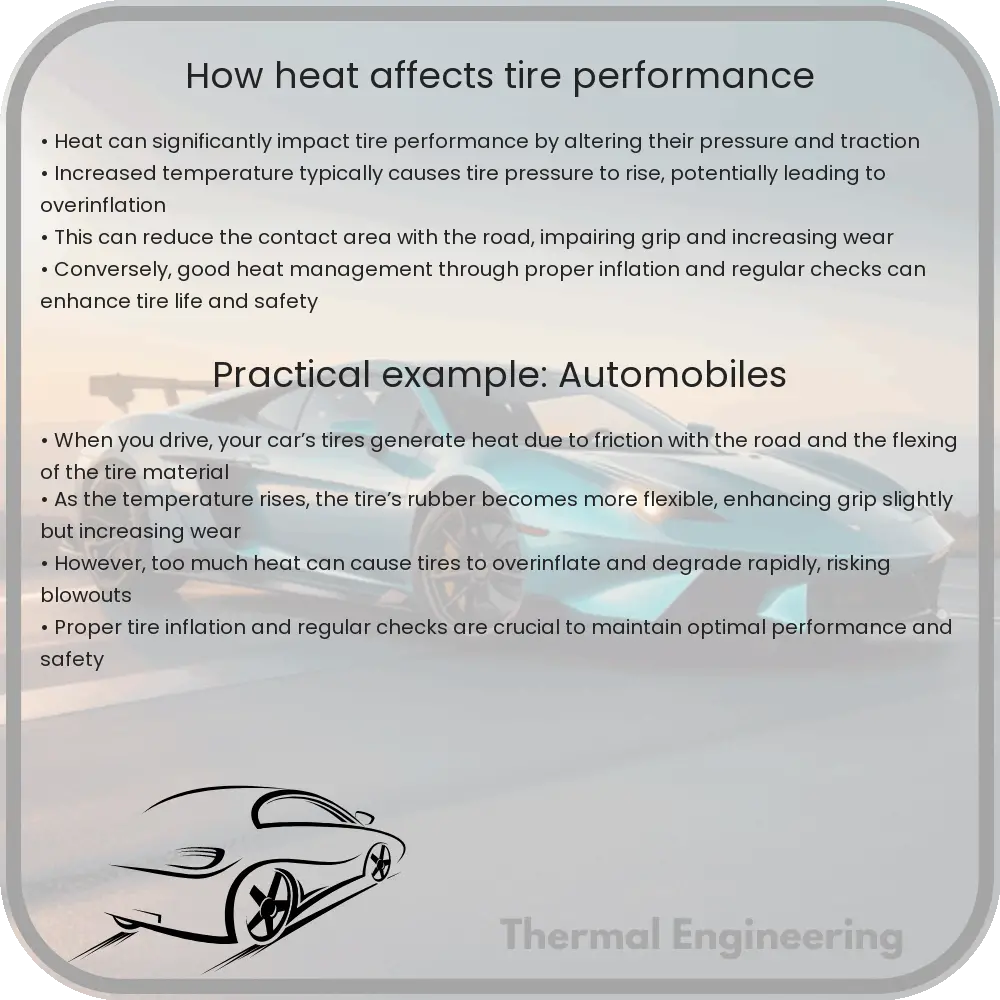Learn how temperature influences tire pressure, tread life, and safety, and get tips for managing tire performance in extreme heat.

Understanding How Heat Affects Tire Performance
Heat plays a significant role in tire performance, affecting everything from tire pressure to tread life and overall vehicle safety. In this article, we will explore the mechanisms by which temperature influences tire function and why it’s crucial for drivers to be aware of these effects.
Thermal Expansion and Tire Pressure
One of the key ways in which heat affects tire performance is through thermal expansion. Tires are filled with air, which expands when heated and contracts when cooled. According to the ideal gas law (PV=nRT), where P is pressure, V is volume, n is the amount of substance, R is the gas constant, and T is temperature, an increase in temperature will lead to an increase in pressure if the volume of the tire remains constant.
- Increased Pressure: As the temperature rises, typically during long drives on hot days or due to the friction of the tire against the road, the air inside the tire expands leading to increased pressure. This can affect the tire’s contact with the road and potentially lead to overinflation.
- Decreased Pressure: In colder conditions, the decrease in temperature can cause the air inside the tires to contract, leading to underinflation. This often results in increased tire wear and reduced fuel efficiency.
Impact on Tread and Overall Tire Life
Heat can also accelerate the wear and tear on tire treads. As the rubber in tires heats up, it can become more pliable and wear down more quickly than usual. Over time, this can lead to the following issues:
- Reduced Tread Life: High temperatures cause the rubber to degrade faster, reducing the lifespan of the tire.
- Loss of Traction: As the tread wears down, the tire’s ability to grip the road effectively diminishes, especially in wet conditions.
Material Fatigue and Failure
Extreme temperatures can lead not only to everyday wear and tear but also to sudden tire failure. This arises from the cumulative effect of cyclic thermal loading – where repeated heating and cooling cycles cause the material to undergo fatigue.
- Blowouts: Extreme heat can weaken the structural integrity of a tire, leading to blowouts. Heat can exacerbate any pre-existing damage to a tire’s structure or compound.
Managing Tire Performance in Varying Temperatures
It is essential for drivers to maintain their tires properly to counteract the negative effects of temperature. Here are some tips:
- Regular Pressure Checks: To account for the increase in internal pressure with rising temperatures, it’s wise to check tire pressure regularly and adjust it according to the manufacturer’s specifications.
- Avoid Overloading: Heavier loads increase tire temperature and pressure, so it’s important to avoid overloading your vehicle.
- Regular Inspections: Regularly inspect the tires for signs of wear, tear, and other damage. Early detection can prevent further exacerbation by high temperatures.
In conclusion, understanding how heat affects tire performance helps drivers maintain their vehicles more effectively, ensuring safety and efficiency on the road. As simple as these measures seem, they play a critical role in vehicle upkeep and performance.